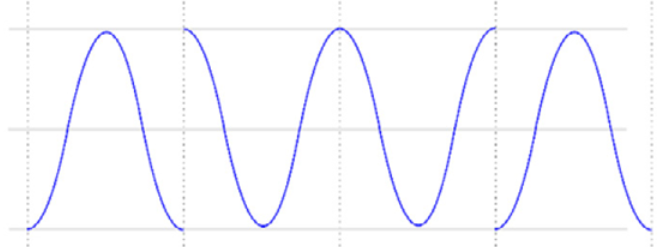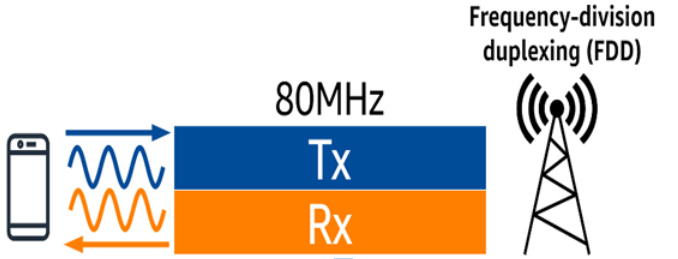Modulation – Understanding Network and Security for Far-Edge Computing
To transmit information using a radio wave, we need to modify that wave somehow to encode our data. There are three aspects of a signal that can be modulated:
Amplitude-shift keying (ASK):
Modulation is based on the power or intensity of the signal. AM radio uses this method:

Figure 3.8 – Amplitude modulation
Frequency-shift keying (FSK):
Modulation is based on how often the wave repeats. FM radio uses this method:

Figure 3.9 – Frequency modulation
Phase-shift keying (PSK):
Modulation is based on where in the cycle the wave is with respect to time. Wi-Fi and cellular technologies use this method:

Figure 3.10 – Phase modulation
Duplexing
So far, we’ve discussed receive-only applications such as the AM/FM radio in your car, or the satellite TV dish on the side of your house. Wireless technologies that involve bidirectional communication must implement some form of duplexing. This can be thought of as the rules for whose turn it is to speak and whose turn it is to listen – or in some cases, how can both members of the conversation speak and hear simultaneously?
All duplexing techniques fall under one of two categories:
Half-duplex: Only one party to the conversation may speak and the other must listen. Then, the roles are reversed. This can be based on the time or urgency of the messages involved.
Full-duplex: Both parties can speak and hear at the same time. This can be accomplished by having separate “paths” set aside for each function, or more complex approaches.
Frequency division duplexing (FDD)
FDD is a full-duplex technique whereby the bandwidth of a given channel is split between transmit and receive sub-channels. Historically, this has been the most common method of achieving bidirectional communication over wireless technologies. It is the preferred method in lower frequency bands:

Figure 3.11 – FDD
FDD is the simplest approach. Because of that, it is also the cheapest to implement in hardware. Unfortunately, in most implementations, it is not possible to dynamically increase or decrease the transmit and receive channels to reflect the needs of a given endpoint. Think of a mobile device that keeps the RX channel utilized at 90% when downloading web pages, but the TX channel is barely touched at 5% because the requests for those pages are small. Or that person you know who monopolizes the conversation and never lets you talk.
You may also like
Archives
- August 2024
- July 2024
- June 2024
- May 2024
- April 2024
- March 2024
- February 2024
- January 2024
- December 2023
- November 2023
- October 2023
- September 2023
- August 2023
- July 2023
- May 2023
- April 2023
- February 2023
- January 2023
- November 2022
- October 2022
- September 2022
- August 2022
- July 2022
- June 2022
- May 2022
- April 2022
- December 2021
- November 2021
- October 2021
- September 2021
- June 2021
Calendar
| M | T | W | T | F | S | S |
|---|---|---|---|---|---|---|
| 1 | 2 | 3 | 4 | 5 | 6 | |
| 7 | 8 | 9 | 10 | 11 | 12 | 13 |
| 14 | 15 | 16 | 17 | 18 | 19 | 20 |
| 21 | 22 | 23 | 24 | 25 | 26 | 27 |
| 28 | 29 | 30 | ||||
Leave a Reply